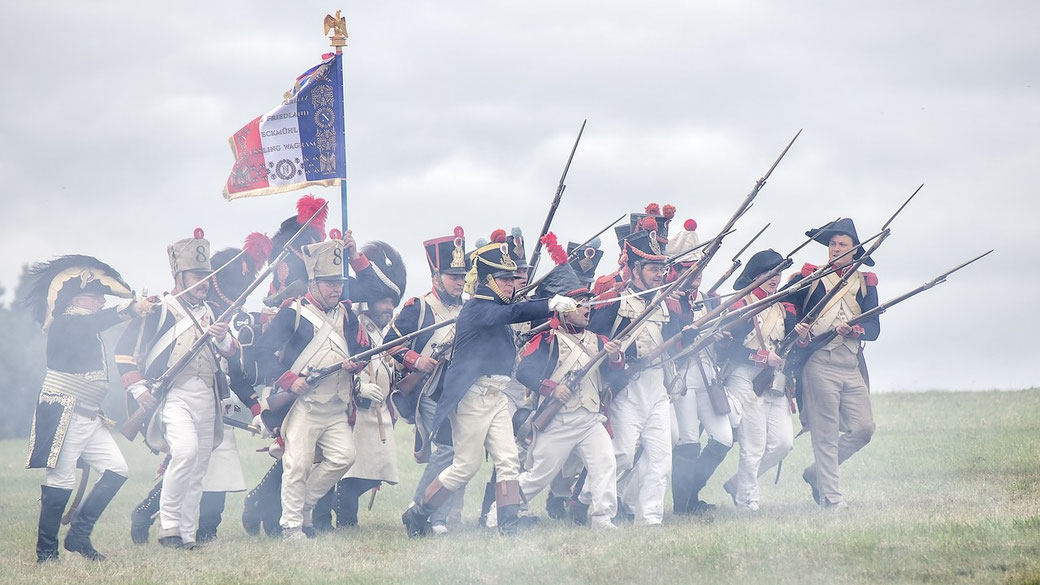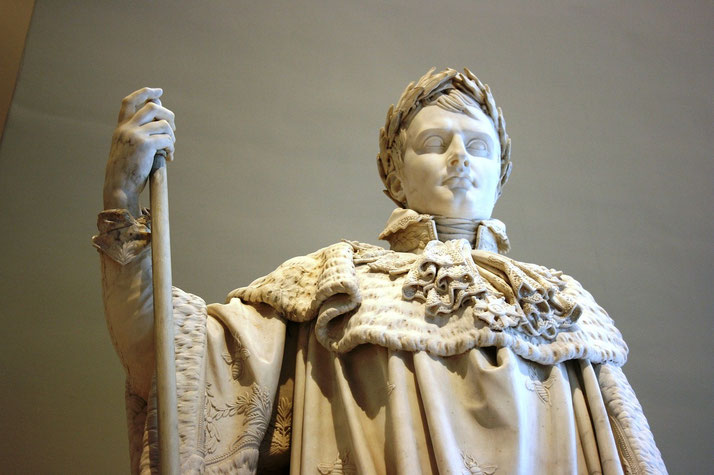Why the Battle of Austerlitz was Napoleon's greatest triumph

The Napoleonic Wars reached a dramatic climax in late 1805 when France’s fortunes were decided on a single battlefield.
Outnumbered but far from outmatched, Napoleon Bonaparte executed a simple plan that lured his enemies into a fatal mistake.
By nightfall, Austria had been humbled, Russia had suffered a severe setback, and France emerged as the unrivaled military power of Europe.
Who were the 'Three Emperors'?
Napoleon Bonaparte had declared himself Emperor of the French in May 1804 after consolidating power during the aftermath of the French Revolution.
By 1805, he had defeated several coalitions of European powers and expanded French influence over much of continental Europe.
His success alarmed Austria, which remained one of the leading states of the Holy Roman Empire, and Russia, which wanted to limit French power in central Europe.
At the head of the Austrian army, Emperor Francis II sought to halt Napoleon’s expansion into German territories in order to protect Austria’s influence within the Holy Roman Empire.
Meanwhile, Tsar Alexander I personally accompanied his army and played an active role in planning the strategy against Napoleon.
Having ascended to the throne in 1801, Alexander intended to strengthen Russia’s position in European affairs.
The combined Austrian and Russian forces formed the Third Coalition, which Britain and Sweden had joined earlier that year, in April 1805.
With numerical superiority and effective cavalry, Francis II and Alexander I believed that they could achieve a clear victory over Napoleon.
The differing strengths of the two sides
The French army possessed several advantages that gave it a clear edge in the campaign.
Napoleon commanded a professional force that had been forged during years of revolutionary and Napoleonic wars.
His corps system allowed him to move forces quickly and to deploy them flexibly while maintaining efficient supply.
Among his generals, men such as Marshal Soult, Marshal Lannes, and Marshal Murat had extensive experience and understood his methods of warfare.
After a series of victories earlier in the campaign, including General Mack’s surrender at Ulm on 20 October 1805 and the capture of Vienna on 13 November, French morale was high.
In contrast, the Austrians and Russians possessed greater numbers and heavy cavalry, but their armies suffered from slower organisation and less efficient command structures.
Across the coalition, coordination often proved difficult due to language barriers, differences in military doctrine, and the overconfidence of senior commanders.
On several occasions, Alexander I overruled the advice of experienced officers despite his lack of military expertise.
In the preceding months, Austria had already endured disaster at Ulm, where Mack surrendered a large portion of his army to Napoleon.
By late November, the allied armies had united in Moravia to confront Napoleon.
How did each side plan to win the clash?
The battlefield near Austerlitz featured rolling hills, small villages, and frozen ponds.
After Napoleon personally surveyed the area, he selected the ground carefully so that he could draw the allies into attacking where he wished.
As part of his plan, he deliberately weakened his right flank by leaving Marshal Davout’s corps exposed to tempt the coalition into committing large numbers of troops there, which created the opening for his main strike in the centre.
At the centre of the battlefield, the Pratzen Heights created a ridge that controlled the surrounding area.
The French initially appeared to leave the heights undefended, which encouraged the allies to occupy them in force.
On the morning of 2 December, weather conditions provided Napoleon with an advantage, as a dense fog concealed French troop movements and reduced visibility for the coalition commanders.
The dramatic day of battle
In the early hours, the allied forces moved forward against Napoleon’s right flank, which they believed was vulnerable.
Marshal Davout’s corps resisted repeated attacks despite their heavy numerical disadvantage, and their determined defence gave Napoleon the opportunity to launch his main attack.
At about 9 am, when the fog began to clear, Marshal Soult led a major attack on the Pratzen Heights.
French columns advanced up the slopes, pushed the allies back, and gained control of the ridge.
Prince Bagration commanded the Russian right wing, where he engaged in intense fighting against Marshal Lannes’ forces on the opposite flank.
After the collapse of the allied centre, Napoleon ordered a full use of the gap in their line.
Marshal Lannes pressed forward on the left while Murat’s cavalry fought Russian horsemen in several harsh battles.
As the day progressed, French forces drove the coalition troops towards the frozen ponds of Satschan and, under heavy artillery fire, the ice broke apart, and many soldiers drowned as they attempted to retreat.
Later reports suggested that Napoleon may have stressed this incident to enhance the image of his victory, although contemporary accounts still described heavy losses in the ponds.
Eventually, by late afternoon, the allied army had collapsed, and survivors fled in disarray.
How much did each side lose?
From the casualty figures, the scale of Napoleon’s victory became clear. French losses were around 9,000 men killed, wounded, or captured, while the coalition suffered approximately 27,000 casualties in battle and a further 12,000 men taken prisoner.
Of these, historians estimate that the majority were Russians, with the remainder Austrians.
The French captured around 180 guns, 50 standards, and thousands of horses.
Among the fallen were numerous senior officers, along with large numbers of artillery pieces and vital supplies.
The destruction of such a significant allied force in one day shocked Europe and showed how effective Napoleon’s military system was.

Aftermath and significance of the battle
In the weeks following Austerlitz, the political effects became clear. On 26 December 1805, Emperor Francis II signed the Treaty of Pressburg, which forced Austria to give up Venetia, Tyrol, and other territories to France and its allies and to pay a large payment.
The following year, the Holy Roman Empire collapsed when Napoleon restructured most German states into the Confederation of the Rhine, which placed them under French control.
Francis II formally renounced the imperial title on 6 August 1806.
As a result of the victory, Tsar Alexander I withdrew Russian forces, which left Britain without major continental allies.
As a result, the Third Coalition dissolved, and Napoleon stood at the height of his power in Europe.
Among historians, Austerlitz has often been seen as Napoleon’s greatest victory, even though it occurred just weeks after the British victory at Trafalgar on 21 October 1805.
What do you need help with?
Download ready-to-use digital learning resources
Copyright © History Skills 2014-2025.
Contact via email
With the exception of links to external sites, some historical sources and extracts from specific publications, all content on this website is copyrighted by History Skills. This content may not be copied, republished or redistributed without written permission from the website creator. Please use the Contact page to obtain relevant permission.





